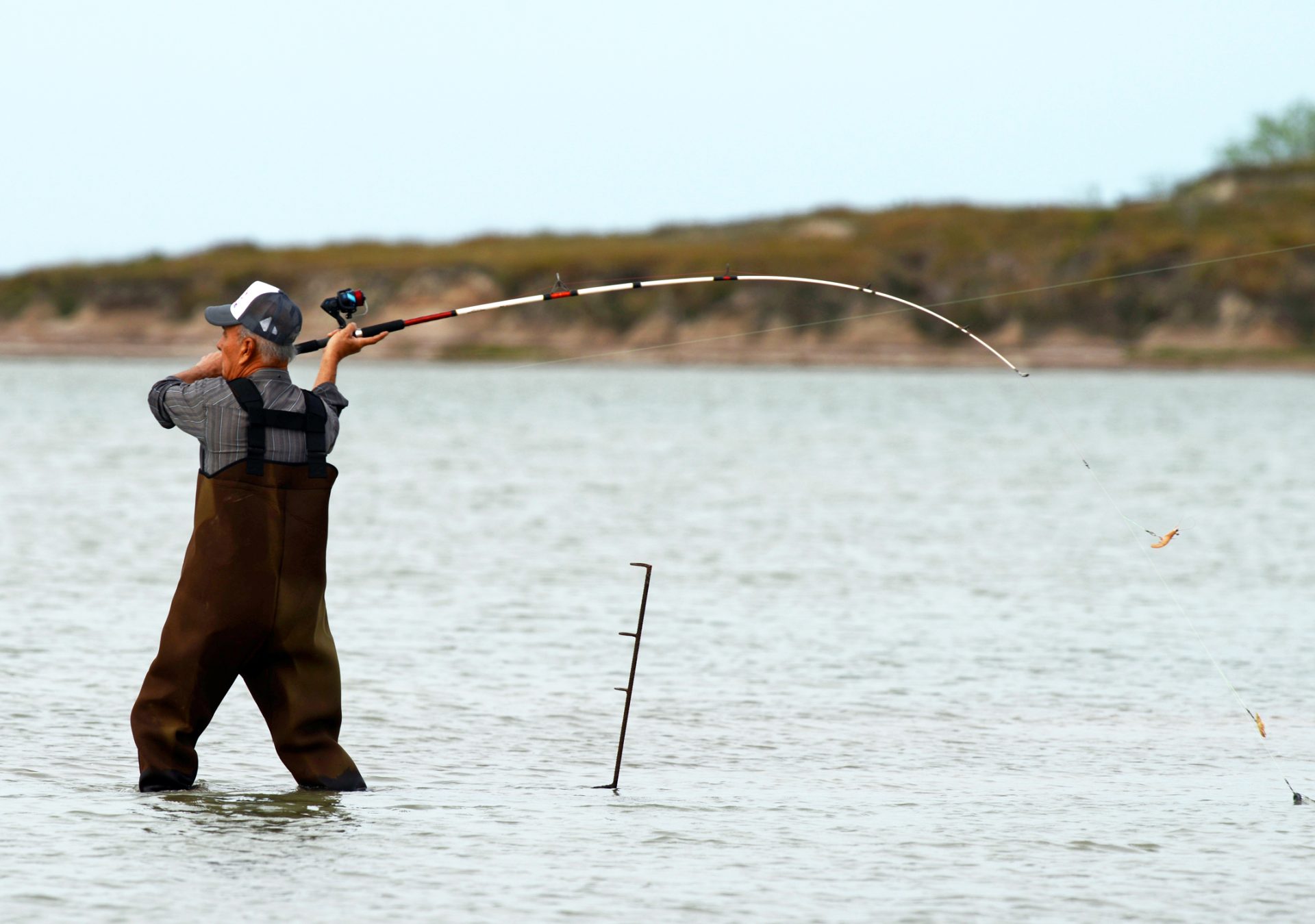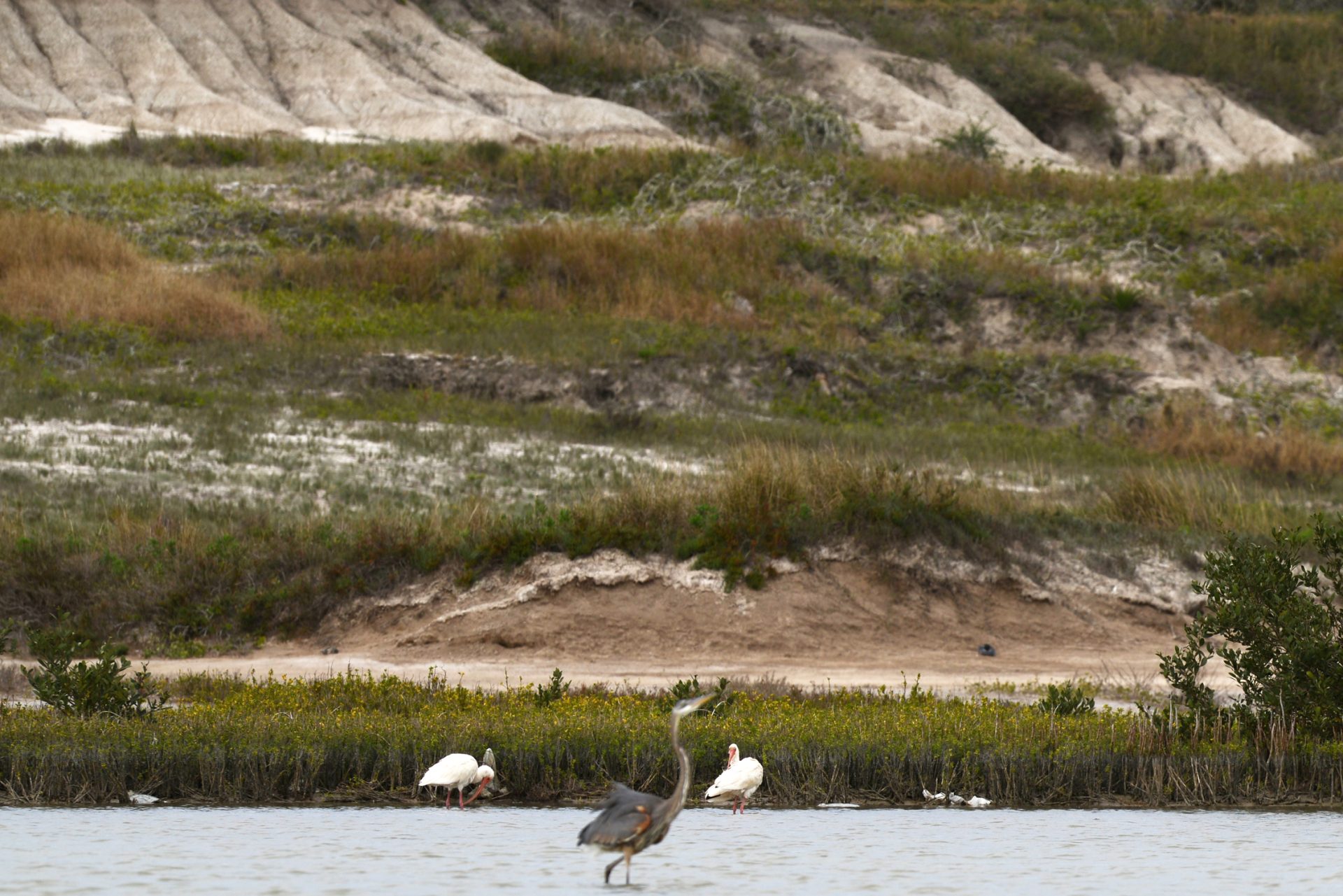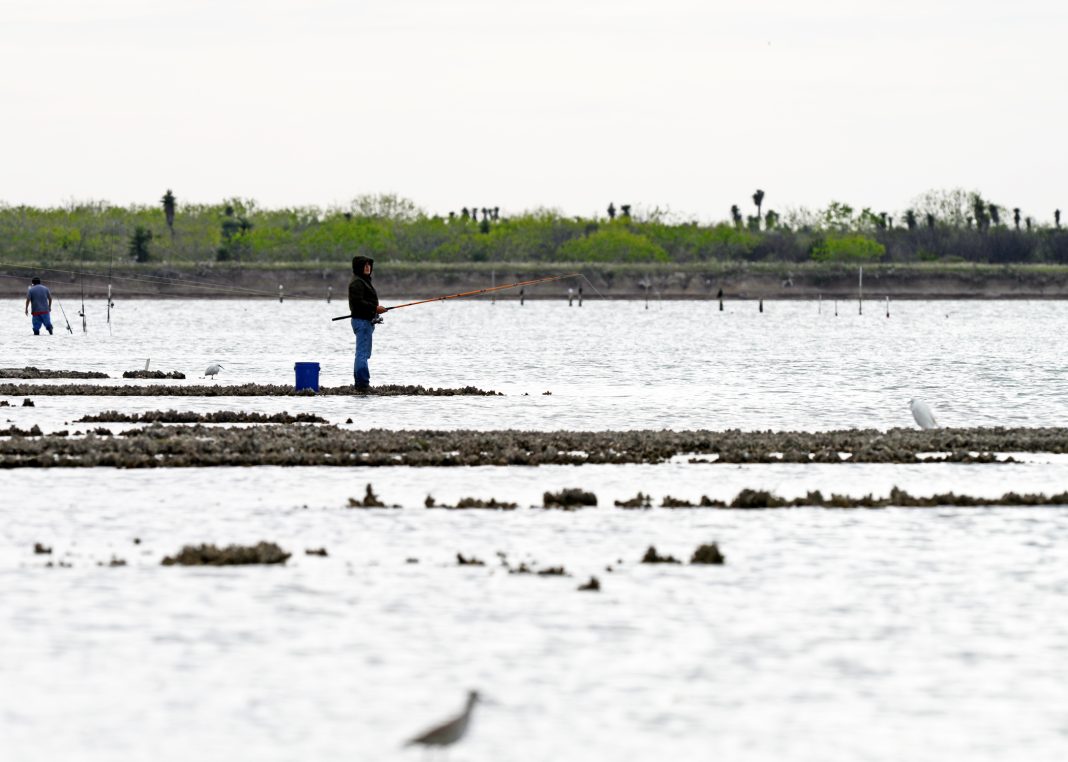Things have really turned around for Bahia Grande, the 10,000-acre tidal basin between Brownsville and Port Isabel that became a dust bowl after construction of the Brownsville Ship Channel in the 1930s and State Highway 100 in the 1950s cut off the flow of water.
Just ask the redhead ducks and redfish.
A pilot channel passing under S.H. 48 between the Brownsville Ship Channel and the southern tip of Bahia Grande was dug in 2005, allowing some tidal flow to and from the basin. It was christened the Carl “Joe” Gayman Bahia Grande Restoration Channel in honor of the former Brownsville Navigation District commissioner and early champion of the re-flooding project.
They’re returning and they’re returning in large numbers. That’s really solely because the seagrass has returned to large portions of Bahia Grande.
In 2007, two interior channels were dug to connect the Bahia Grande’s main body of water with two smaller interior basins, the Laguna Larga and Little Laguna Madre, which restored tidal flow throughout the whole system. A project to widen Gayman channel was completed last summer, substantially enhancing tidal flow in the basin, according to David Hicks, professor with the University of Texas Rio Grande Valley’s School of Earth, Environmental and Marine Sciences.
Hicks’ involvement with Bahia Grande goes back to before the initial re-flooding. His lab at UTRGV conducts the Bahia Grande Monitoring Program to keep track of what’s going on the basin, particularly the salinity — saltiness — of the water. If the water is too hyper-saline it can’t support much of an ecosystem, hence the widening project, Hicks said.
“All that was really done to try to moderate the extreme hyper-salinity that would occur in there, especially on the north side, because it’s a very shallow basin,” he said. “We’re talking two, maximum three feet deep over the whole thing. But it has a very large surface area. So that large surface area, compared to the volume, just kind of sets it up for high evaporation rates in our semi-arid climate down here, where we get maybe 14 to 18 inches (of rain) a year. Usually that comes in two weekends.”
Earlier restoration efforts increased the tidal exchange volume to 8 percent of normal at best, Hicks said, adding that the new channel widening should increase that two- to three-fold. It’s too early to tell what the precise effect on salinity has been, since the past year was wetter than usual in terms of direct rainfall over Bahia Grande, which can skew the numbers for some time, he said.

A piece of good news is that the three water quality monitoring stations erected in the basin before the initial re-flooding are now able to detect water levels rising and falling with the tide, while prior to the widening there was no detectable change, Hicks said. Deciding where to locate the stations involved guesswork, and as it turns out none of the station is located in the northwest part of the basin, probably the most susceptible to salinity, he said.
The seagrass is the key component that’s going to lead to a more productive estuary.
Railroad tracks once ran across Bahia Grande, and the remaining raised bed serves as a “formidable barrier” that diverts the flow of water from the Gayman channel up the east side of the basin before allowing it to seep into the northern part, which keeps the northwestern portion saltier, Hicks said.
“We still see salinity almost three times as high as full ocean seawater,” he said.
Hicks said a grant proposal currently under review explores the possibility of cutting another, wider opening on the west side of the former railroad bed to allow water to flow to the basin’s northwestern quadrant.
“If you create a path for it to come out of that west side, then you might actually be able to circulate waters through that whole system,” he said. “And then that way over time I think you could really bring a lot of that salinity under control.”

Still, things have improved enough that seagrass is making a big comeback, which in turn has lured back the redhead ducks — lots of them.
“Bahia Grande, prior to the Brownsville Ship Channel construction, back when it was natural, it used to support huge populations of redhead ducks, and now we’re seeing them out there again,” Hicks said. “They’re returning and they’re returning in large numbers. That’s really solely because the seagrass has returned to large portions of Bahia Grande.”
If the salinity can be reduced even more, it’s estimated another 700 hectares of seagrass could grow, which would mean even more ducks, not to mention redfish, giant schools of which can be seen swimming everywhere around the basin, he said.
“The seagrass is the key component that’s going to lead to a more productive estuary,” Hicks said.
Still, there’s already plenty of reason to celebrate, he said.
“The restoration has gone incredible well,” he said. “I think everybody can pat themselves on the back, even if we didn’t do another thing to it. It’s already a really, really big success.”





